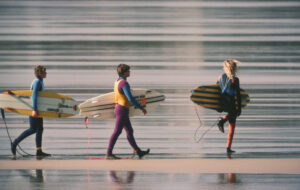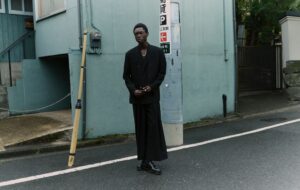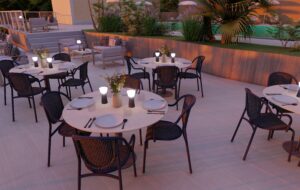


words Kieran Long
Plus fours and anarchy? The day the streets of east London became a golf course.
It started auspiciously. I wandered into a seedy car park on a Sunday morning in east London to find the place awash with hungover-looking people wearing plus fours, Pringle sweaters and outrageous tracksuits and pulling golf trolleys. The media, sucked in by a dead donkey story par excellence, were everywhere. TV crews and print journalists outnumbered the players for much of the morning.
But it was away from the media glare of the first tee that the full surrealism of the day became clear. The streets north of Worship Street and south of Great Eastern Street near Shoreditch are deserted at the weekends, dominated as they are by office buildings and warehouses. The tournament was a hidden festival, the street plan of this historical warehouse quarter transformed into an intricate network of fairways and greens, some holes turning two corners from tee to green, others working their way through a churchyard. Small galleries of people gathered outside pubs, watching the players working their way round the 18-hole course.
Golf pro and ex-Ryder Cup player Ronan Rafferty led the tournament away with a booming 60-yard drive down the first. Players shuffled their club selection as they saw the PVC ball loop into the air and struggle to make headway into the wind. The pressure was immense – an assembled horde of press, other players, police and bemused passers-by crowded round the first tee. Big cheers greeted the player whose first shot found its way on to the roof of a four-storey building on Leonard Street, and the gentleman who played his second shot from inside the lounge bar of the Princess Royal pub on Paul Street.
Every group had a referee. Ours smoked considerably more herbal cigarettes than a match official should before the sixth tee. This was the point at which I sliced my drive into a car park and ended up playing my shot perched on top of a brick wall, whacking a six iron into someone’s skylight. The occupants kindly threw my ball into a very convenient lie.
The competition had a simplicity bordering on genius. Balls were small, cotton-wool stuffed hacky-sacks, with a standing seam to prevent them rolling underneath cars or down drains. Each player was issued with a square of astroturf to carry round from which to take their shots. The green was another disc of astroturf, with gas stopcock covers flipped open to form the holes.
Apart from that, it was pretty much anarchy. No part of the urban environment was off limits, and despite 60-odd people in various states of drunkenness carrying around bags of metal sticks, there was no damage. What is most surprising is the fact that urban golf actually turned out to be quite a good game, requiring a modicum of genuine technique and some imagination. Apart, that is, from the almost entirely random process of putting, the result of which is, quite frankly, in the lap of the gods.
Organisation of the event was beautifully balanced between the shambolic and the super-efficient. This was summed up by the prizegiving, where the winner, slightly the worse for wear, jumped on to the stage to collect his trophy and knocked it out of the hands of the MC, smashing the engraved glass case and prompting a huge cheer from the crowd. There was poetic justice in this. The competition is not about the permanence of the trophy cabinet, but about the fleeting occupation of the streets by people who shouldn’t really be there.
Organiser Jeremy Feakes is now planning to go “global” – there is talk of tournaments in Cork, Glasgow, Liverpool. “I won’t rest till we’ve played New York,” says Feakes. I don’t believe him. He’ll do plenty of resting, and somehow New York will just happen. Icon flagged up the tournament in April last year and Feakes blames the inception of the project partly on that story: “Look what you started,” he said, wandering across the 18th green with a genuine triumph under his belt.
Your trusty correspondent managed to come third, too, beating the professional Rafferty by five shots. All the players had the feeling that something quite special was happening here. The Shoreditch Urban Golf competition was the most radical piece of urbanism in London since the 1960s. But it only lasted one day. One day when 18 circles of astroturf and a cohort of volunteer stewards and lycra-clad bicycle-riding policemen transformed the streets of east London into a golf course.
















